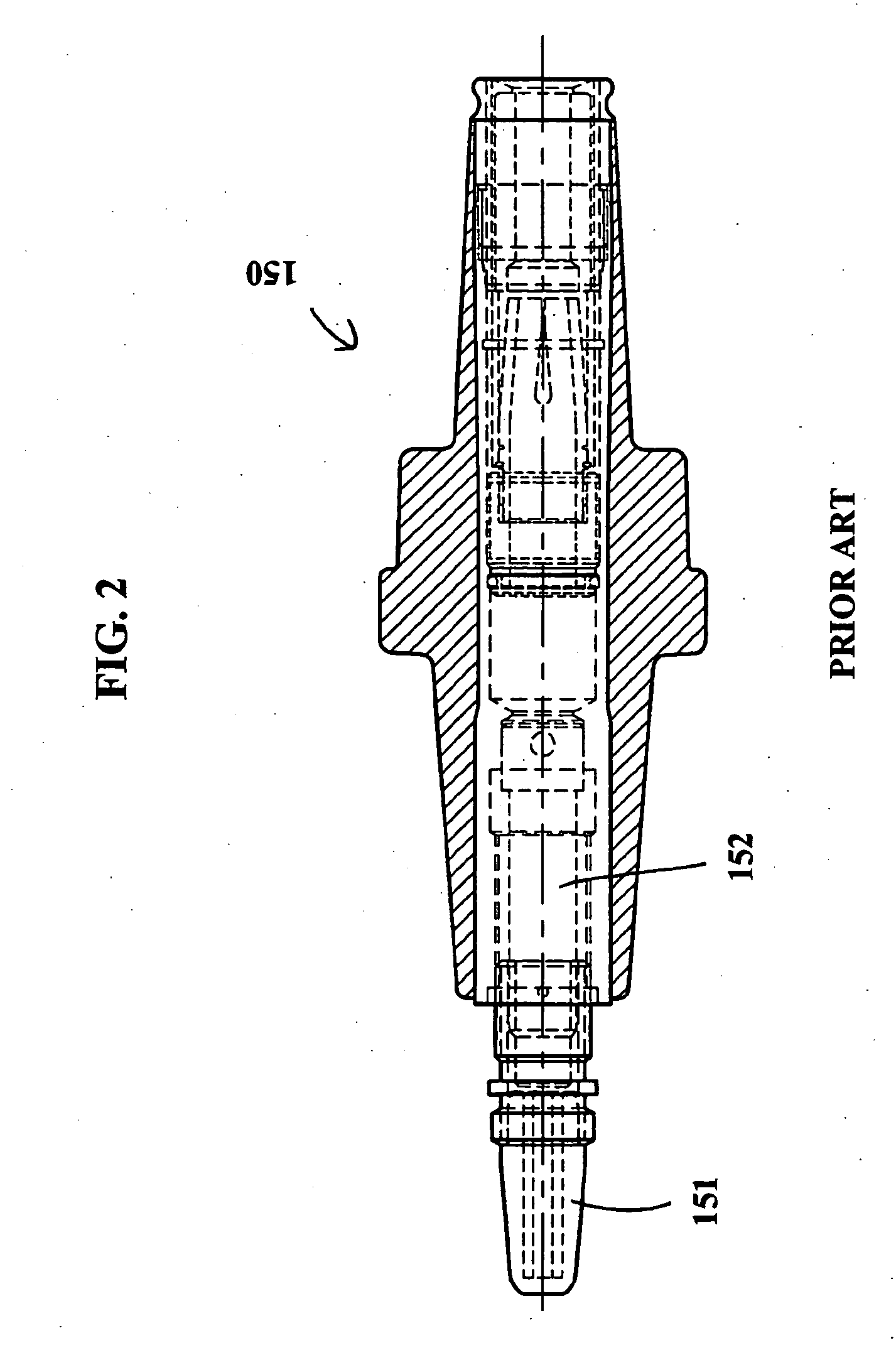Multiple bore termination system
a termination system and multi-bore technology, applied in the direction of couplings/cases, coupling device connections, electrical equipment, etc., can solve the problems of difficult task, difficult procedure, and inability to perform procedures using hot sticks, etc., to achieve convenient and convenient operation, reduce the effect of the tap plug and the effect of reducing the tap plug
- Summary
- Abstract
- Description
- Claims
- Application Information
AI Technical Summary
Benefits of technology
Problems solved by technology
Method used
Image
Examples
Embodiment Construction
[0046] As required, a detailed illustrative embodiment of the present invention is disclosed herein. However, techniques, systems and operating structures in accordance with the present invention may be embodied in a wide variety of forms and modes, some of which may be quite different from those in the disclosed embodiment. Consequently, the specific structural and functional details disclosed herein are merely representative, yet in that regard, they are deemed to afford the best embodiment for purposes of disclosure and to provide a basis for the claims herein, which define the scope of the present invention. The following presents a detailed description of a preferred embodiment of the present invention.
[0047] Referring initially to FIG. 1, shown is a typical elbow housing for a prior art elbow housing termination system. As depicted, housing 100 comprises a first bore 110, which is perpendicular to a second bore 120 and a third bore 130. Typically, a cable is inserted in first...
PUM
 Login to View More
Login to View More Abstract
Description
Claims
Application Information
 Login to View More
Login to View More - R&D
- Intellectual Property
- Life Sciences
- Materials
- Tech Scout
- Unparalleled Data Quality
- Higher Quality Content
- 60% Fewer Hallucinations
Browse by: Latest US Patents, China's latest patents, Technical Efficacy Thesaurus, Application Domain, Technology Topic, Popular Technical Reports.
© 2025 PatSnap. All rights reserved.Legal|Privacy policy|Modern Slavery Act Transparency Statement|Sitemap|About US| Contact US: help@patsnap.com



